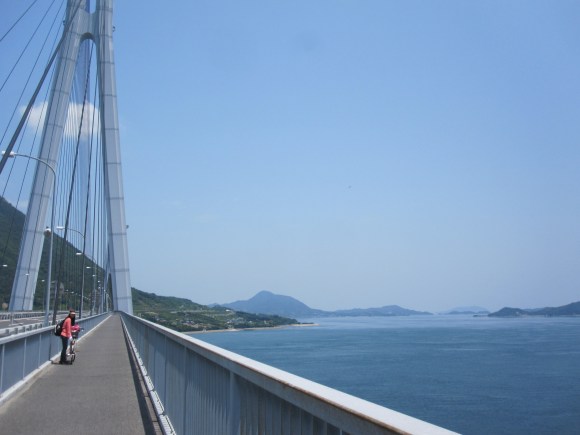
Between the mentally satisfying sense of accomplishment and physical exhaustion of spending a whole day crossing three islands by bike, plus the after-dinner beer we treated ourselves to, we slept like babies after covering 30 kilometers of the Shimanami Kaido cycling course on day one. We still had more than half the distance to go before we were back on Japan’s main island of Honshu, though, and between us and our destination in Hiroshima Prefecture lay breathtaking vistas, historical artifacts, delicious food, and even a dinosaur.
We recently journeyed by rental bike across the beautiful Shimanami Kaido, the cycling road that island hops across Japan’s Inland Sea between Ehime and Hiroshima Prefectures. If you missed the first day of our 70-kilometer (45.5-mile) ride you can find it here, or read on for the second and final day of the trip.
1. Omishima Island
With the morning light trickling in through the windows, we rose off the futon spread out on the floor of the room at our inn. We headed downstairs for breakfast, which was a mixed Japanese/Western-style set featuring yogurt, ham, pickles, a soft-boiled egg to pour over rice, and miso soup with enough mushrooms to make you shed tears of either joy or bitterness, depending on your personal feelings about edible fungi.
▼ RocketNews24 travel tip: If you hate mushrooms, try finding a spouse who’ll eat them for you.
But while a good night’s sleep and a healthy breakfast are great ways to end and start the day, respectively, there’s only so much they can do to alleviate the aching muscles that come from several hours atop a bike, and after finishing our meal we climbed back up the stairs to rest our creaky joints a little bit longer, before finally getting on the road a little around 11:30 a.m.
Omishima is the last island on the Shimanami Kaido in Ehime Prefecture, which is famous for the mandarin oranges called mikan in Japanese. The cycling course goes by a number of orchards, and as we rode past them in late May, we were greeted by the sweet scent of the trees’ flowers, which happened to be blossoming at the time.
Following the blue line in the pavement that clearly marks the course, we soon saw the bridge that would take us over to the next island. Since we’d spent so much time loafing around in the morning, though, we were starting to get hungry again. Thankfully, at the foot of the bridge is a rest stop, and we popped in for lunch.
▼ Since we were still in Ehime, there was a huge selection of orange juice.
Spending two days biking along the ocean will give anyone a serious seafood craving, so we paired the sweet mikan juice with a sea bream cutlet burger, since the prized fish is another delicacy the Setonaikai Inland Sea is known for.
With that, it was time to say good-bye to Ehime, so we started the gentle, winding approach that rose the 40 meters (131 feet) from sea level to the bridge across the strait to Ikuchijima Island.
As with all the toll bridges on the Shimanami Kaido, you either place the coins into the collection box, in this case 100 yen (US$1), or toss in the pre-paid vouchers available from the same cycling terminals that rent bikes along the course.
Waiting at the top is a gorgeous view back towards Ehime. Surprisingly, there’s no giant placard welcoming you to Hiroshima Prefecture at the exact border about three-fourths across.
What there is, however, is a set of wooden clappers underneath a pair of towering girders.
Banging them together creates a strange warbling echo. The written instructions say you can also produce the same effect by clapping your hands, but we didn’t have any luck with this method.
▼ What does work great, though, is shouting the name of a loved one right here.
2. Ikuchijima Island
Once on the other side of the bridge, we were finally in Hiroshima Prefecture. Even most Japanese people aren’t particularly familiar with the name Ikuchijima, but what they do know, though, is Setoda, the largest residential enclave on the island that also produces more lemons than anywhere else in Japan.
We’re not sure who drew the citrusy line in the sand that stipulates Ehime handles oranges and Hiroshima does lemons, but regardless, as soon as you cross the bridge to Ikuchijima, the Shimanami Kaido slices around and through a multi-leveled terraced lemon farm.
As the road leveled out by the shoreline, we came across a table set up by representative of the local Oba-san Kai, or Auntie Association. While they’re not out there every day, we were lucky enough that on the date we rode by, they were handing out slices of lemon, soaked in honey, that you eat rind and all.
This is actually a common snack for athletes in Japan, usually eaten during a break in the middle of or just following sports practices or competitions. We’re not sure we’d want to eat an entire lemon like this, but the sample of Setoda produce we tried had a pleasantly tart kick.
Ikuchijima is also where you’ll find the westward-facing Sunset Beach, by far the nicest patch of sand along the often rocky coastline of the Shimanami Kaido.
There’s another rest stop/cycling terminal here, where you can sit in the shade, watch the waves, and, you guessed it, pick up more lemon-related foodstuffs, including refreshing lemon ice cream…
…decadent lemon cream cake…
…and the intriguing lemon hot sauce Lemosco, all of which are made by companies based in Hiroshima.
We were back on our bikes at 1:30 p.m., with about an hour to go until the next bridge. As we got closer to our eventual destination of Onomichi on Honshu, the neighborhoods started to get more developed, although there were still plenty of signs of the slow-paced country lifestyle.
We’re not sure if the approach to the next bridge was steeper than those that had come before it, or if our legs were just starting to feel the effects of all the hours of pedaling. Either way, we ended up walking a large portion of it.
▼ The experienced cyclists who zoomed past us didn’t seem to have any problems, though.
3. Innoshima Island
Innoshima isn’t famous for any type of citrus fruit, nor does it have a sandy beach or relaxing hot spring. That didn’t matter to us, though, because you know what it does have? A pirate castle.
Dedicated to the Murakami Suigun, the band of marine warriors alternately referred to as a navy and pirates who controlled the Inland Sea during Japan’s feudal era, the Innoshima Suigun Castle was one of the things we were dead-set on seeing while biking the Shimanami Kaido.
▼ Some of Innoshima Island’s non-samurai/pirate-related scenery
You don’t became a success as a pirate without also being crafty, though, and little did we know that there was a trap waiting for us to fall into. The tourism map listed the castle as one of the sites to see along the Shimanami Kaido, so we were confused when we came to an intersection where the blue line marking the course went straight ahead, while a sign by the roadside indicated to turn right for the Suigun Castle.
A right turn, though, led to an incredibly steep uphill road. As luck would have it, that same day there was a timed cycling fun run along the Shimanami Kaido, and standing at the intersection was a staffer. Figuring he’d know the local geography better than anyone, we asked if turning right would indeed get us to the castle. He told us it would, and that we’d first go up the hill, down a ridge, and find it on the other side.
So we started biking briskly up the hill. Then biking slowly. Then walking. And finally, trudging upwards, pushing our bikes, with the afternoon sun beating down on us. After more than 30 minutes of this, with still no site of the crest of the ridge we needed to get over, we finally gave up and turned back around to rejoin the cycling course back at the intersection where we’d stopped and asked for directions.
▼ The elusive Innoshima Suigun Castle
Several kilometers down the road, we came to a different sign indicating to make a right turn for the castle, and finally things became clear. The first route, that goes up and over the mountain, is for visitors arriving by car. If you’re biking to the Suigun Castle, ignore the first sign, and wait until you come across the second one. That said, the detour off the main cycling course still involves the most prolonged inclines you’re likely to encounter, and you should allow 40 to 60 minutes to get to the castle and then back.
Admission is 310 yen per person, which grants you access to the single room displaying the collection of arms and armor used by the Murakami Suigun. They’re definitely impressive, especially the helmets, but even as someone whose job description includes “writing about samurai,” I was in and out in about 15 minutes, since the whole “castle” is just two small turrets, the second of which is a small museum related to ships.
Photography is prohibited, though, so if you want to see that nifty set of headgear, you’ll have to stop by in-person. Honestly, though, you could find similarly satisfying displays inside many of Japan’s more conveniently located castles. Considering how far off the Shimanami Kaido the Suigun Castle is, we’re not really sure it justifies a visit unless you’ve got tons of time to kill, and even if you do, the cycling course goes right by a seaside park with a giant statue of a Brontosaurus.
▼ Why is this not on the tourist maps?!?
4. Mukaishima Island
Finally back on track, we crossed the bridge to Mukaishima, the last island before Honshu. Unfortunately, our pirate misadventure on Innoshima had cost us a lot of time, leaving us with precious little daylight.
If there’s one section of the Shimanami Kaido to buzz through in the evening, though, it’s Mukaishima. There aren’t any major sites to see, but since the course winds around the western edge of the island, you’ve got a great view of the sunset as you push on through the final stage of your trip.
Picturesque as it was, however, we had a problem. The very last cycling terminal, located on Honshu near the Onomichi train station, closes at 6 p.m., but it was 5:40 by the time we crossed over to Mukaishima. There was no way we were going to make it in time.
Thankfully, rental bikes can be returned to any of the cycling terminals along the Shimanami Kaido. Oddly enough, the second-to-last terminal, located behind the Mukaishima Community Center, is open until 7 p.m., and we rolled up to it with about 25 minutes to spare.
Disappointed we’d come so far just to fall one step short of our goal, we decided that if we couldn’t bike the last portion of the course, we’d at least walk it. As we turned in our bicycles, we asked the friendly staff for directions to the bridge over to Honshu.
“Oh, there’s no bridge to Honshu,” they told us. “If you walk 200 meters down the street, you’ll come to the port where everyone catches the ferry to Onomichi”
▼ Hold on, there’s no road that goes from Mukaishima to Onomichi?
It turns out that the only way to make the last portion of the trip is by boat. Even if you’ve got a bike, you have to roll it onto the ferry with you for the five-minute, 110-yen cruise to Japan’s largest island.
We hate to declare victory on a technicality, but if there’s no more solid surface to ride on, we think we’re justified in saying we biked the whole cycling road. Especially when the absolute last terminal at Onomichi Port is a piddly 100 meters down the sidewalk from where you get off the ferry at.
So that’s it, we’re saying we did the whole Shimanami Kaido. And after 70 kilometers of natural beauty and memorable meals, we’re saying you should too.
Related: Shimanami Kaido English Website
Photos: RocketNews24

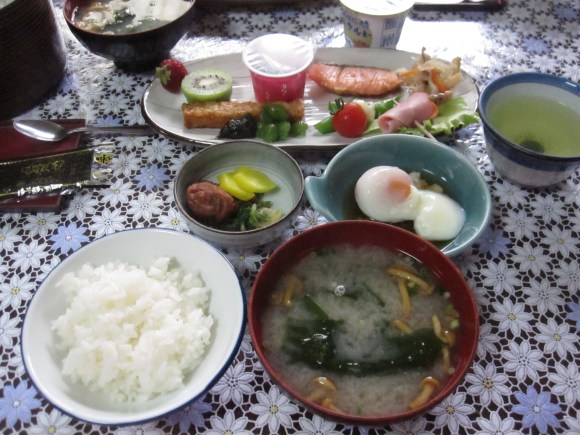
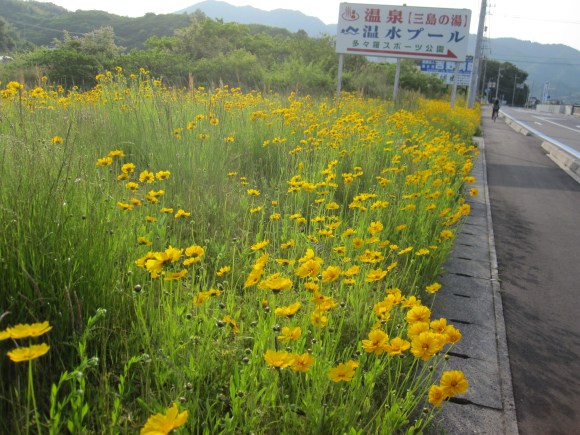
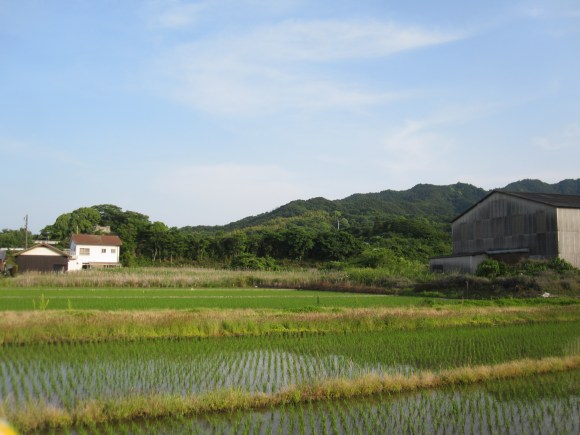
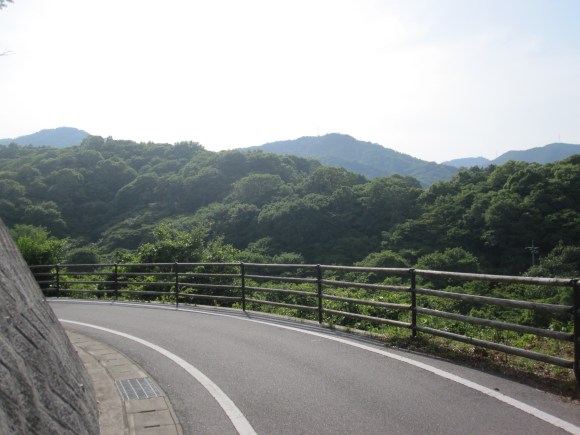
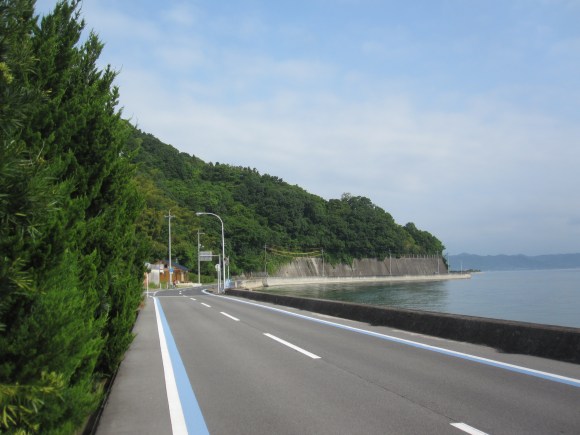
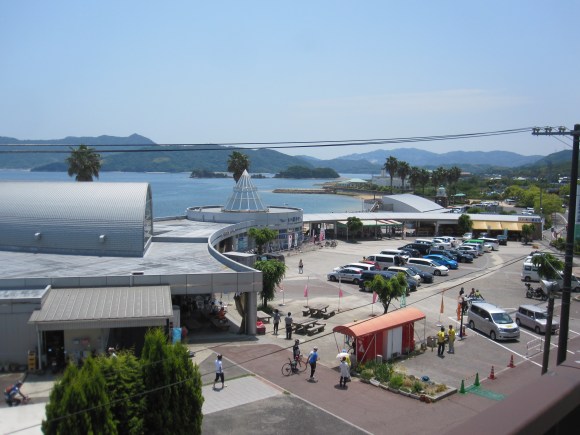
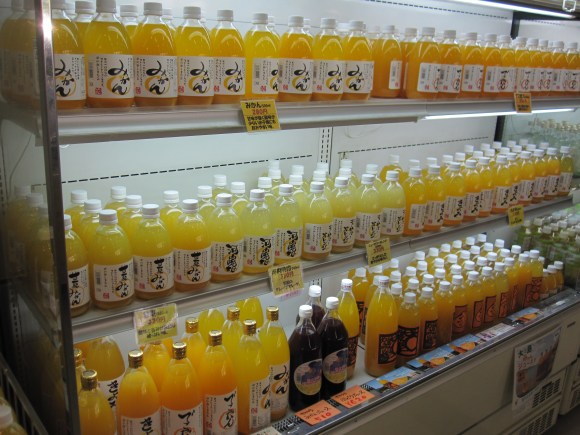
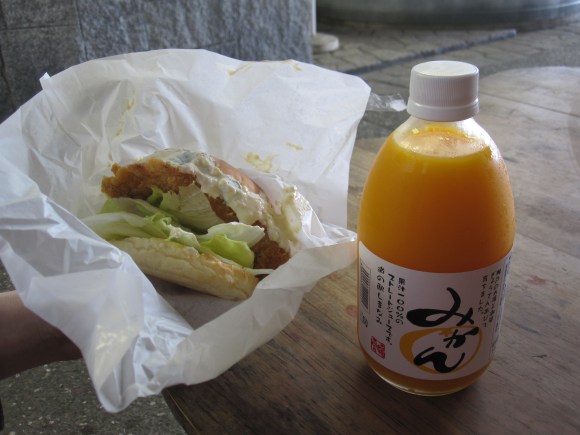
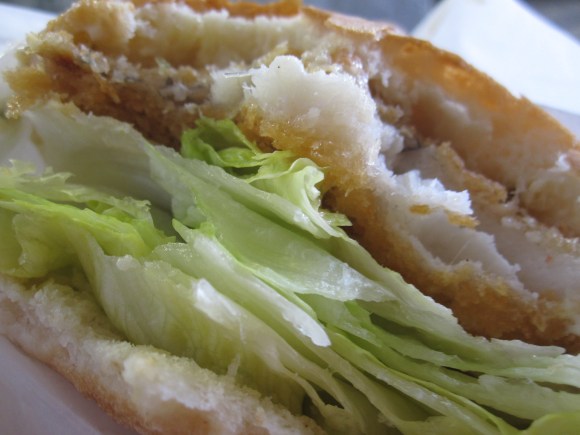
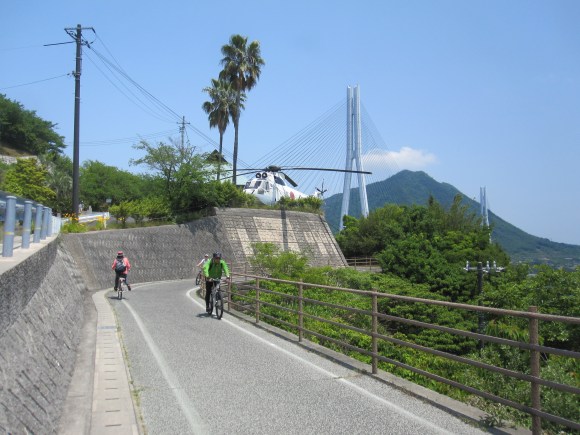
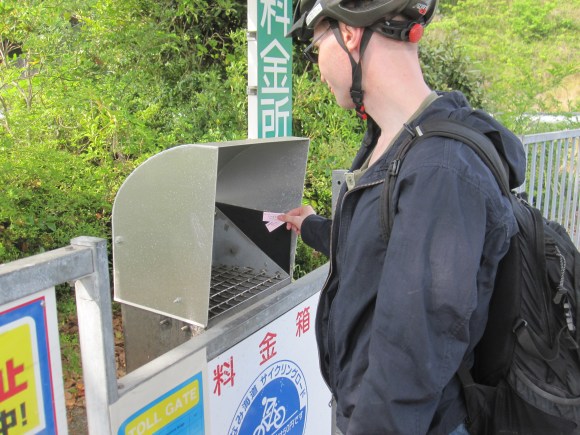
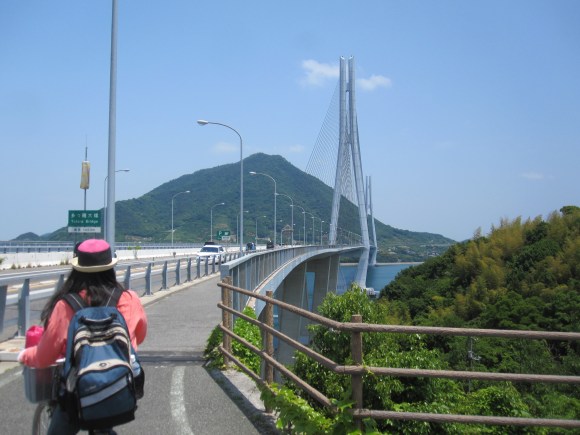
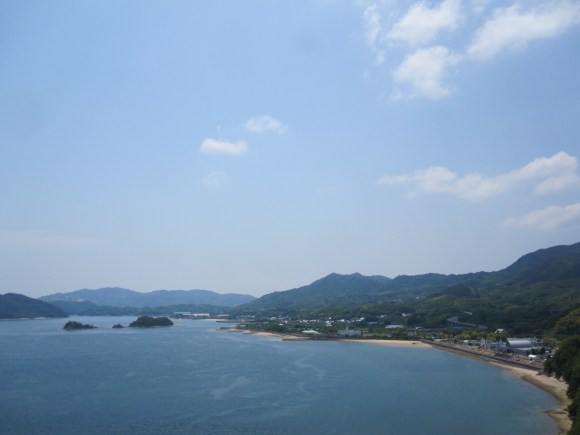
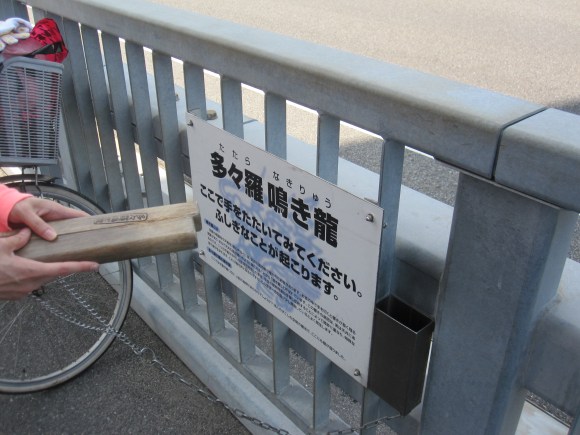
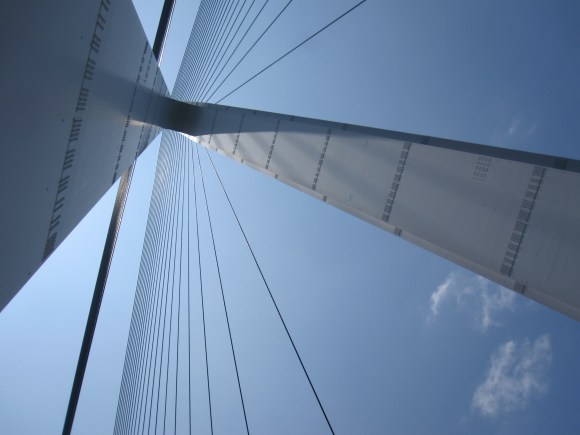
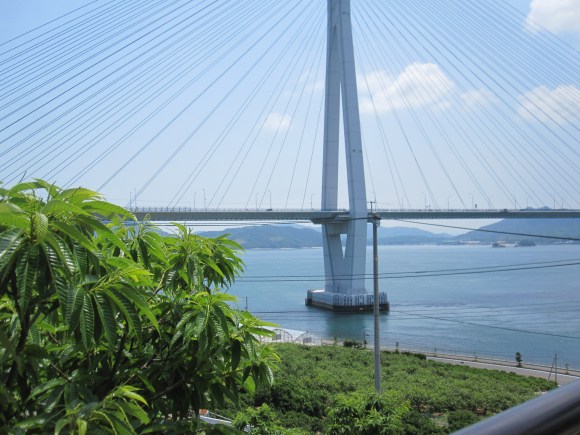
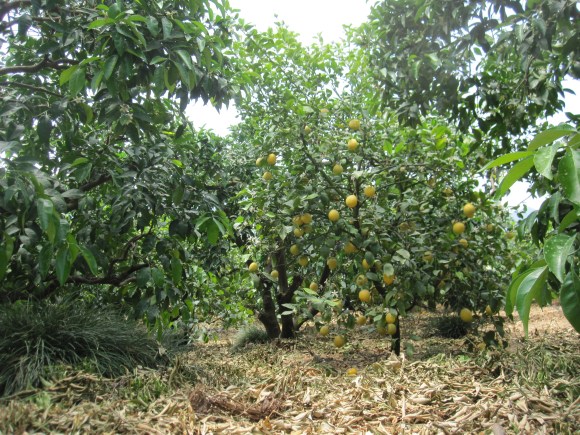
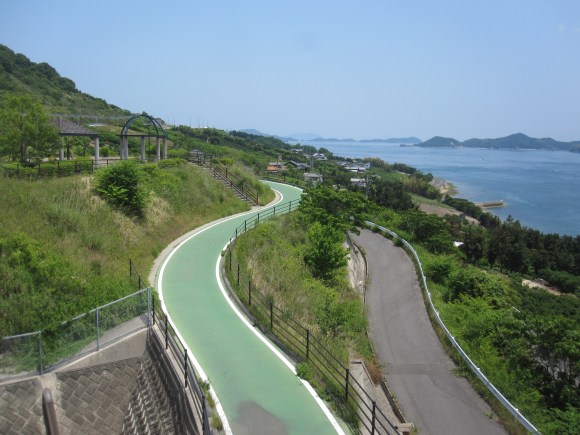
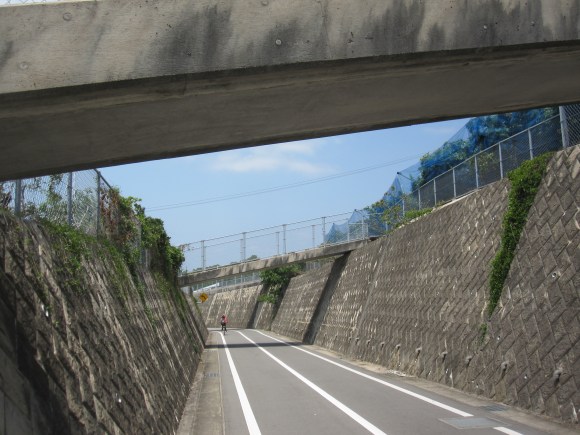
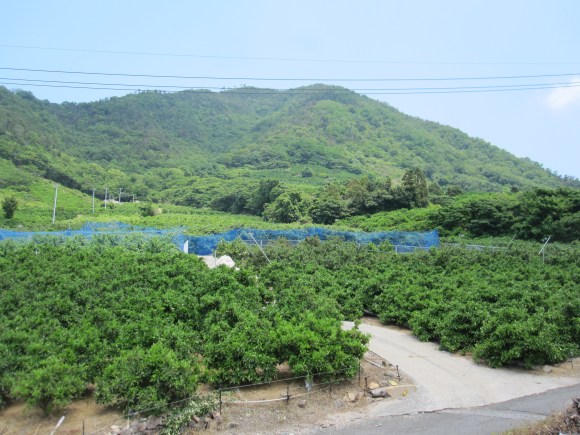
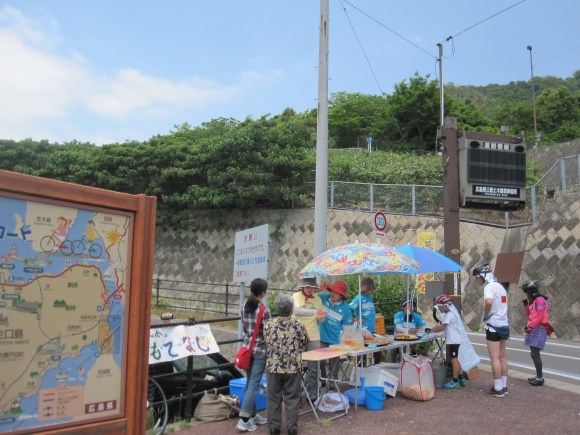
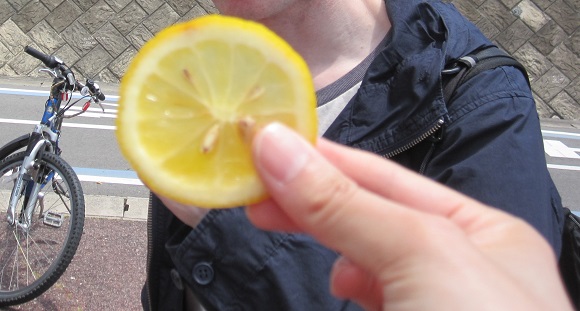
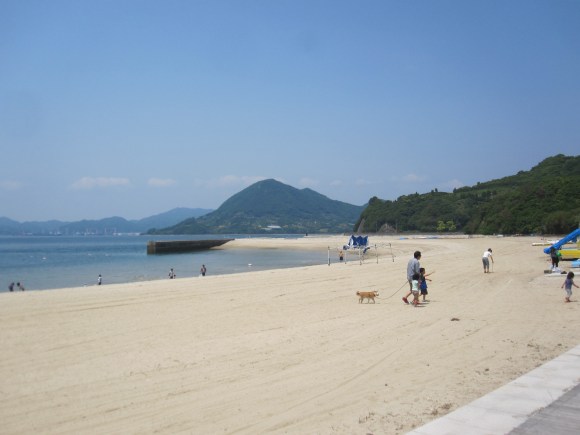
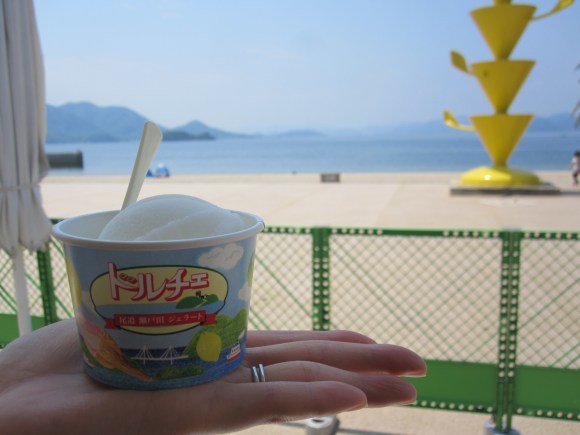
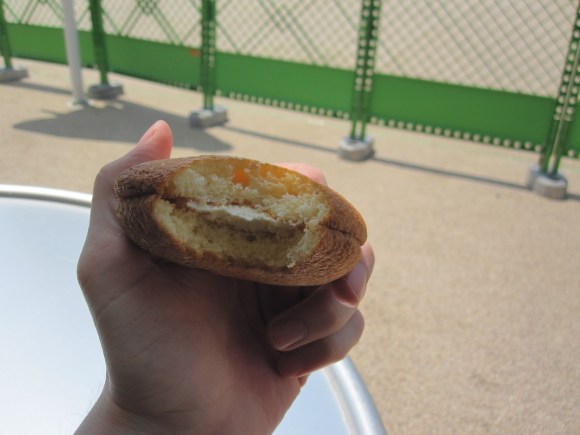
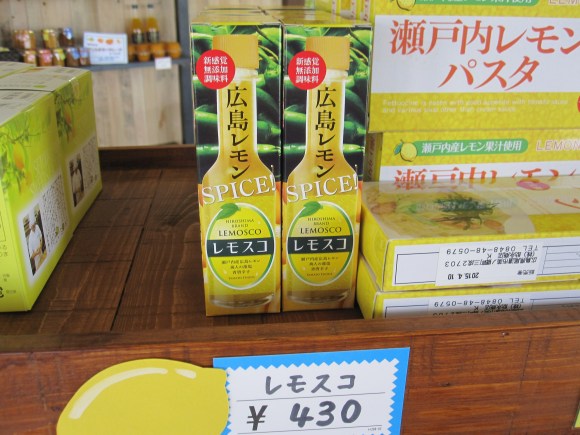

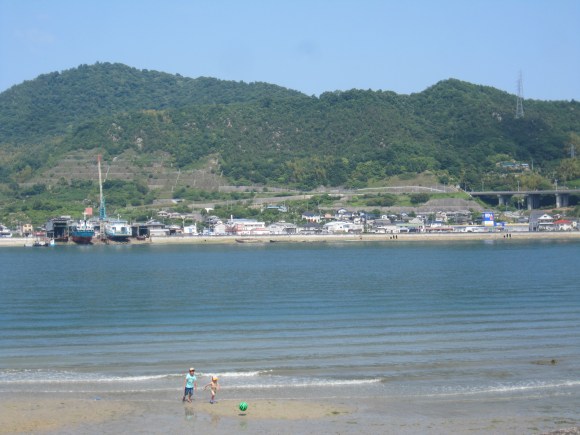
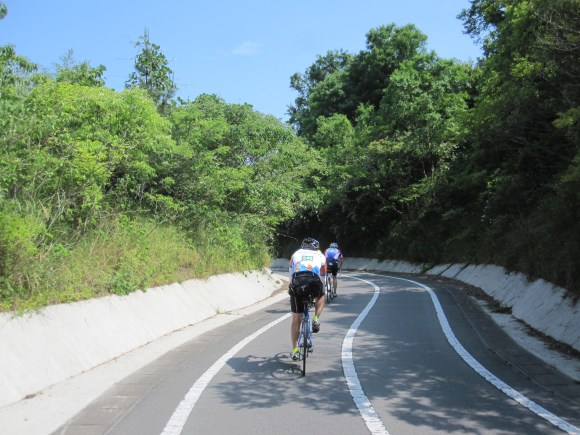
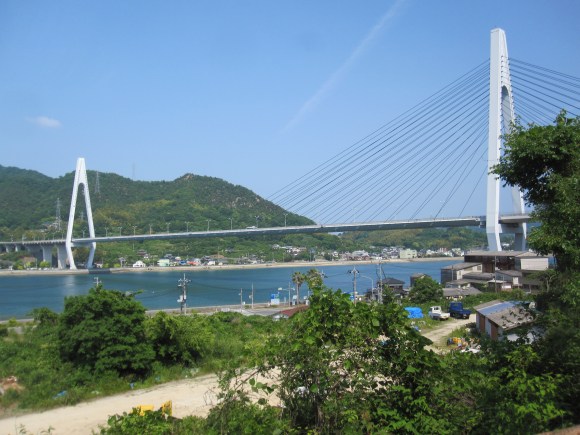
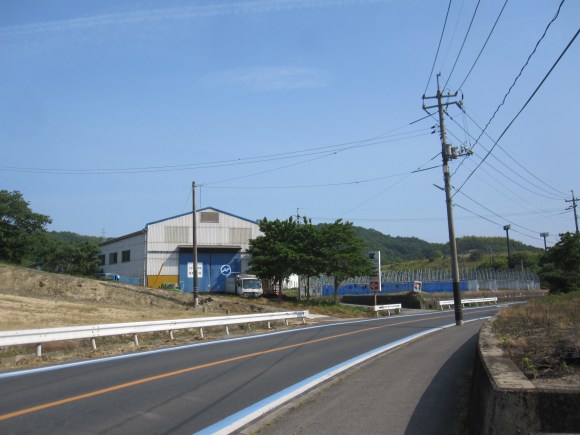
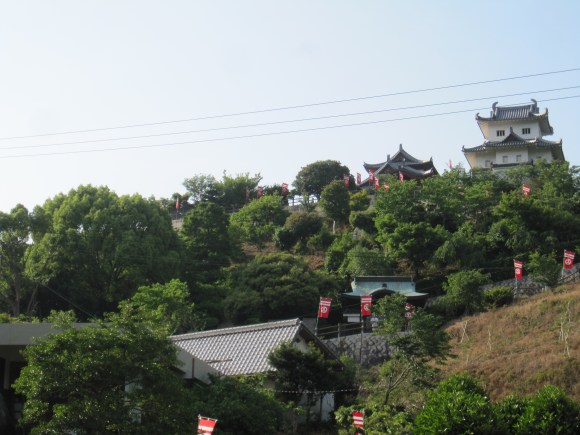
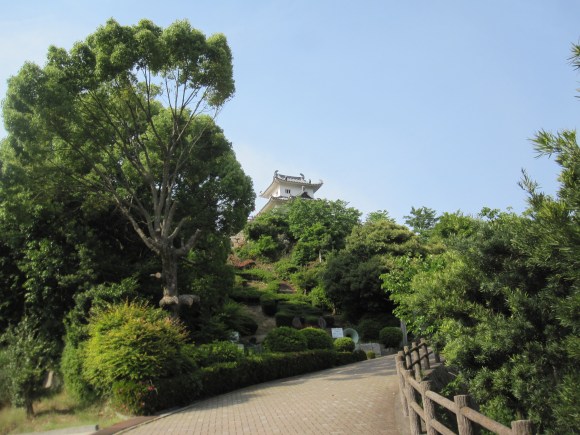
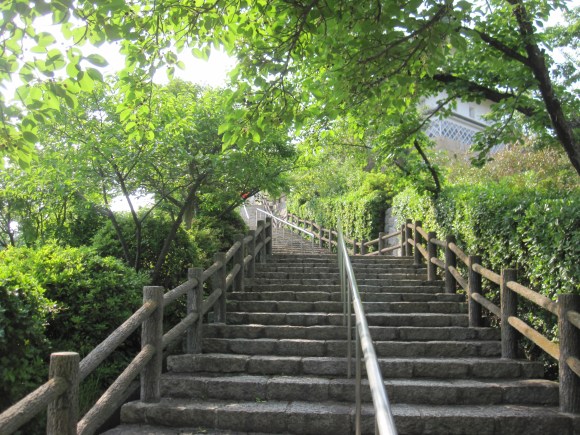
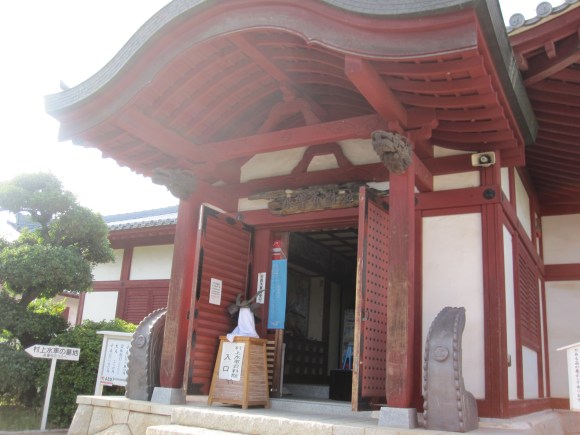
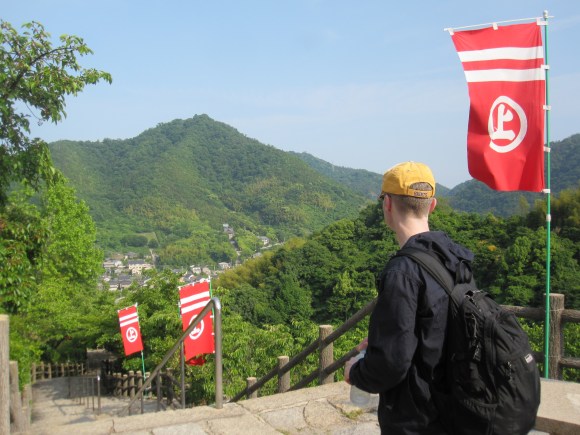
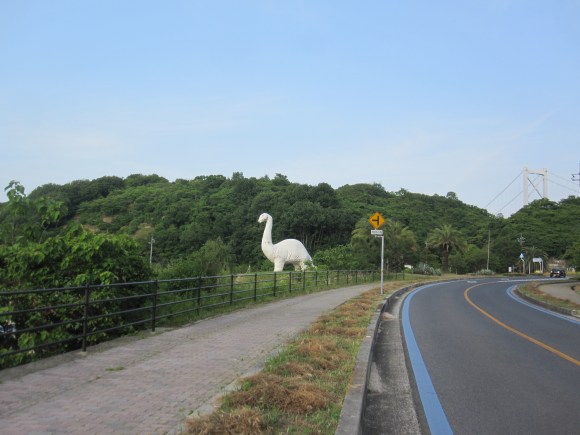
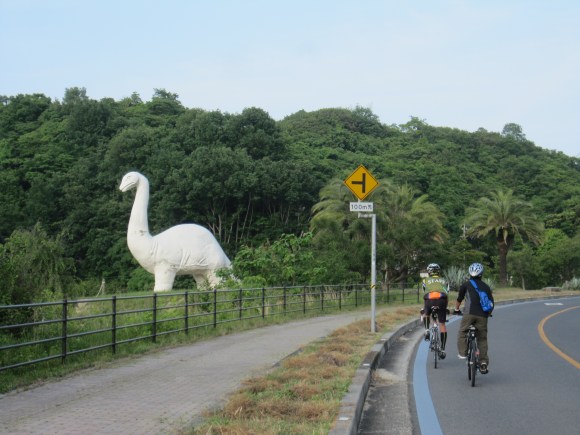
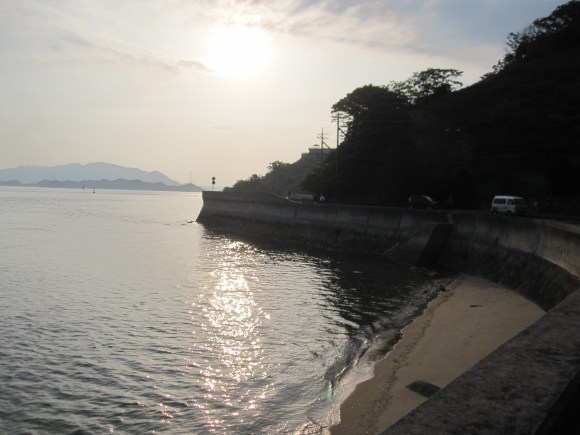
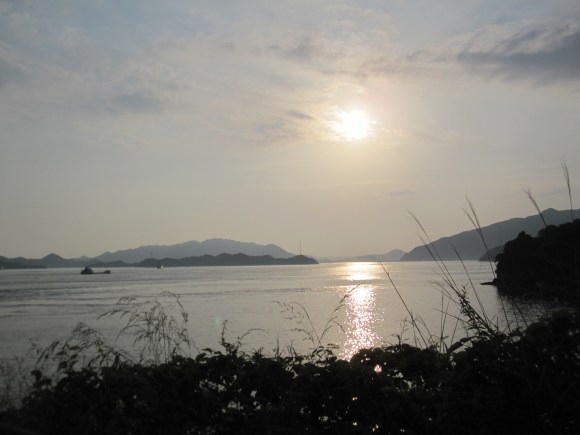
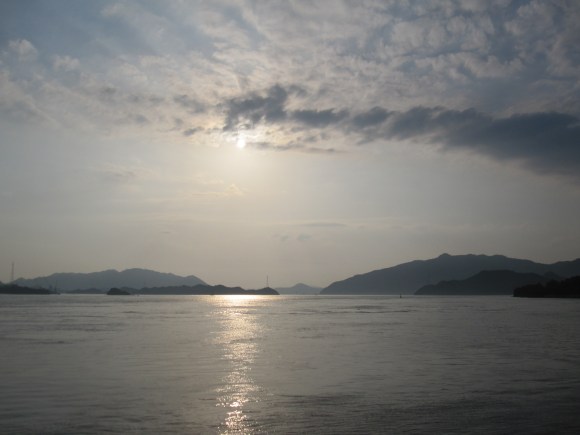
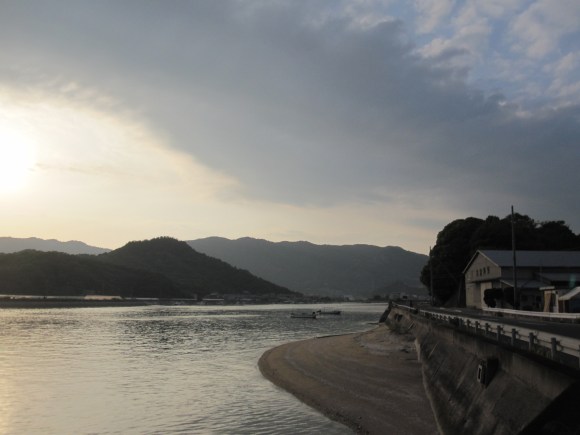
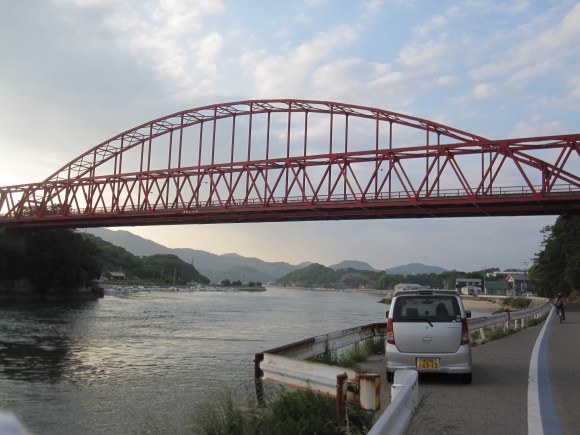
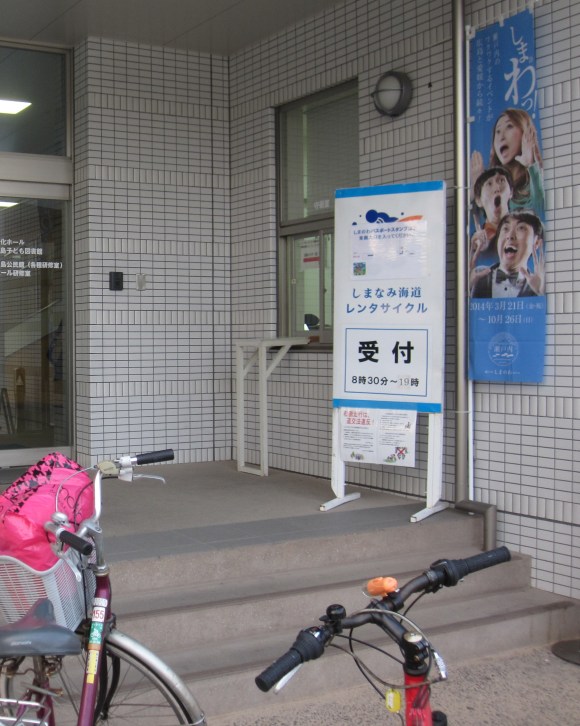
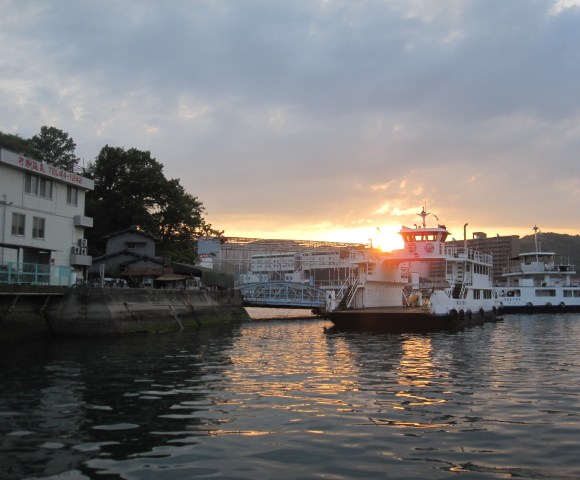
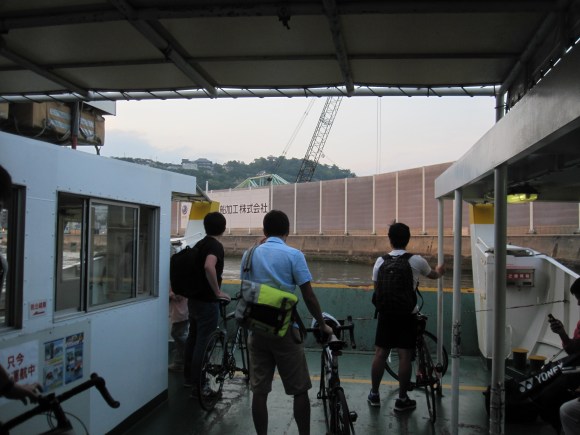
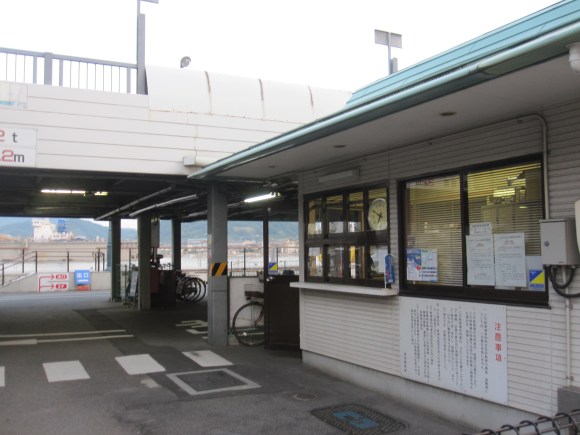
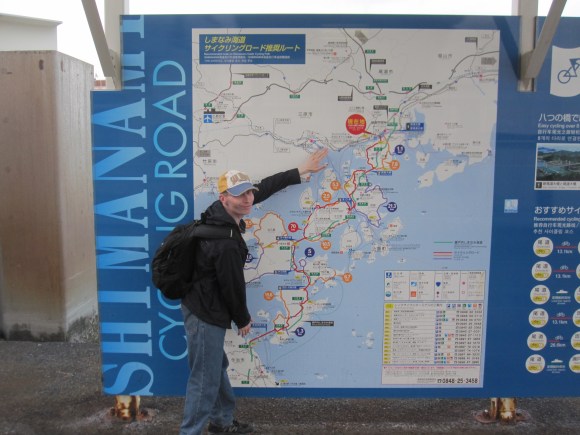
 Soup not soap: Japanese public bathhouses surviving by converting into retro-chic cafés
Soup not soap: Japanese public bathhouses surviving by converting into retro-chic cafés Breathtakingly beautiful beach in often-overlooked part of Japan is like a scene out of Your Name
Breathtakingly beautiful beach in often-overlooked part of Japan is like a scene out of Your Name Starbucks Japan joins Been There drinkware line with 20 cool designs for all over Japan【Pics】
Starbucks Japan joins Been There drinkware line with 20 cool designs for all over Japan【Pics】 Don’t know which sake to drink? These handy flavor charts help you pick by region of Japan
Don’t know which sake to drink? These handy flavor charts help you pick by region of Japan Coca-Cola releases special anime-design bottle just for Japan
Coca-Cola releases special anime-design bottle just for Japan McDonald’s new Happy Meals offer up cute and practical Sanrio lifestyle goods
McDonald’s new Happy Meals offer up cute and practical Sanrio lifestyle goods All-you-can-drink Starbucks and amazing views part of Tokyo’s new 170 meter-high sky lounge
All-you-can-drink Starbucks and amazing views part of Tokyo’s new 170 meter-high sky lounge More foreign tourists than ever before in history visited Japan last month
More foreign tourists than ever before in history visited Japan last month The oldest tunnel in Japan is believed to be haunted, and strange things happen when we go there
The oldest tunnel in Japan is believed to be haunted, and strange things happen when we go there Studio Ghibli glasses cases let anime characters keep an eye on your spectacles
Studio Ghibli glasses cases let anime characters keep an eye on your spectacles Beautiful Sailor Moon manhole cover coasters being given out for free by Tokyo tourist center
Beautiful Sailor Moon manhole cover coasters being given out for free by Tokyo tourist center Randomly running into a great sushi lunch like this is one of the best things about eating in Tokyo
Randomly running into a great sushi lunch like this is one of the best things about eating in Tokyo Is the new Shinkansen Train Desk ticket worth it?
Is the new Shinkansen Train Desk ticket worth it? Starbucks reopens at Shibuya Scramble Crossing with new look and design concept
Starbucks reopens at Shibuya Scramble Crossing with new look and design concept Hey, Japanese taxi driver! Take us to your favorite restaurant in Tsuruga City!
Hey, Japanese taxi driver! Take us to your favorite restaurant in Tsuruga City! Disney princesses get official manga makeovers for Manga Princess Cafe opening in Tokyo
Disney princesses get official manga makeovers for Manga Princess Cafe opening in Tokyo We try out “Chan Ramen”, an underground type of ramen popular in the ramen community
We try out “Chan Ramen”, an underground type of ramen popular in the ramen community Beautiful new Final Fantasy T-shirt collection on the way from Uniqlo【Photos】
Beautiful new Final Fantasy T-shirt collection on the way from Uniqlo【Photos】 Foreign English teachers in Japan pick their favorite Japanese-language phrases【Survey】
Foreign English teachers in Japan pick their favorite Japanese-language phrases【Survey】 There’s a park inside Japan where you can also see Japan inside the park
There’s a park inside Japan where you can also see Japan inside the park Japanese convenience store packs a whole bento into an onigiri rice ball
Japanese convenience store packs a whole bento into an onigiri rice ball Studio Ghibli releases Kiki’s Delivery Service chocolate cake pouches in Japan
Studio Ghibli releases Kiki’s Delivery Service chocolate cake pouches in Japan Japan’s bone-breaking and record-breaking roller coaster is permanently shutting down
Japan’s bone-breaking and record-breaking roller coaster is permanently shutting down New definition of “Japanese whiskey” goes into effect to prevent fakes from fooling overseas buyers
New definition of “Japanese whiskey” goes into effect to prevent fakes from fooling overseas buyers Foreign passenger shoves conductor on one of the last full runs for Japan’s Thunderbird train
Foreign passenger shoves conductor on one of the last full runs for Japan’s Thunderbird train Our Japanese reporter visits Costco in the U.S., finds super American and very Japanese things
Our Japanese reporter visits Costco in the U.S., finds super American and very Japanese things Kyoto bans tourists from geisha alleys in Gion, with fines for those who don’t follow rules
Kyoto bans tourists from geisha alleys in Gion, with fines for those who don’t follow rules Studio Ghibli unveils Mother’s Day gift set that captures the love in My Neighbour Totoro
Studio Ghibli unveils Mother’s Day gift set that captures the love in My Neighbour Totoro Domino’s Japan now sells…pizza ears?
Domino’s Japan now sells…pizza ears? New Japanese KitKat flavour stars Sanrio characters, including Hello Kitty
New Japanese KitKat flavour stars Sanrio characters, including Hello Kitty Sales of Japan’s most convenient train ticket/shopping payment cards suspended indefinitely
Sales of Japan’s most convenient train ticket/shopping payment cards suspended indefinitely Sold-out Studio Ghibli desktop humidifiers are back so Totoro can help you through the dry season
Sold-out Studio Ghibli desktop humidifiers are back so Totoro can help you through the dry season Japanese government to make first change to romanization spelling rules since the 1950s
Japanese government to make first change to romanization spelling rules since the 1950s Ghibli founders Toshio Suzuki and Hayao Miyazaki contribute to Japanese whisky Totoro label design
Ghibli founders Toshio Suzuki and Hayao Miyazaki contribute to Japanese whisky Totoro label design Doraemon found buried at sea as scene from 1993 anime becomes real life【Photos】
Doraemon found buried at sea as scene from 1993 anime becomes real life【Photos】 Tokyo’s most famous Starbucks is closed
Tokyo’s most famous Starbucks is closed One Piece characters’ nationalities revealed, but fans have mixed opinions
One Piece characters’ nationalities revealed, but fans have mixed opinions We asked a Uniqlo employee what four things we should buy and their suggestions didn’t disappoint
We asked a Uniqlo employee what four things we should buy and their suggestions didn’t disappoint Princesses, fruits, and blacksmiths: Study reveals the 30 most unusual family names in Japan
Princesses, fruits, and blacksmiths: Study reveals the 30 most unusual family names in Japan Studio Ghibli’s new desktop Howl’s Moving Castle will take your stationery on an adventure
Studio Ghibli’s new desktop Howl’s Moving Castle will take your stationery on an adventure We tour Onomichi, Hiroshima, where old meets new and a whole lot more
We tour Onomichi, Hiroshima, where old meets new and a whole lot more Japan’s new luxury sightseeing train will show you part of the country most foreigners never see
Japan’s new luxury sightseeing train will show you part of the country most foreigners never see Osaka to Fukuoka for less than 40 bucks? It’s possible with Japan’s overnight ferry
Osaka to Fukuoka for less than 40 bucks? It’s possible with Japan’s overnight ferry Samsung’s new Smart Bike features lane-marking laser pointers, a rear camera and more
Samsung’s new Smart Bike features lane-marking laser pointers, a rear camera and more Three bridges in Okinawa Prefecture offer the most spectacular panoramic vistas of the sea【Pics】
Three bridges in Okinawa Prefecture offer the most spectacular panoramic vistas of the sea【Pics】 Netizen’s dare lands him in a tough spot after Japan’s unexpected soccer victory over Colombia
Netizen’s dare lands him in a tough spot after Japan’s unexpected soccer victory over Colombia Japanese-style Rilakkuma teahouse opens in one of the most beautiful places in Japan
Japanese-style Rilakkuma teahouse opens in one of the most beautiful places in Japan Take a look at Tsunoshima Ōhashi, one of the most beautiful bridges in Japan! 【Pics】
Take a look at Tsunoshima Ōhashi, one of the most beautiful bridges in Japan! 【Pics】 New Japanese biking laws say no more earphones in ears…but what about other orifices?
New Japanese biking laws say no more earphones in ears…but what about other orifices? Japan’s 10 best cultural experience activities/tours, as chosen by travelers
Japan’s 10 best cultural experience activities/tours, as chosen by travelers Japanese town’s Cat Street View lets you virtually tour its backstreets, meet feline residents
Japanese town’s Cat Street View lets you virtually tour its backstreets, meet feline residents New sushi types: chocolate citrus yellowtail and cheddar cheese tempura. Crazy, or crazy good?
New sushi types: chocolate citrus yellowtail and cheddar cheese tempura. Crazy, or crazy good? Man travels 100 kilometers in middle of the night in Japan to punch another dude in the throat
Man travels 100 kilometers in middle of the night in Japan to punch another dude in the throat Japanese citrus farmers deal with crop-stealing wild boars by killing them, selling their meat
Japanese citrus farmers deal with crop-stealing wild boars by killing them, selling their meat Yoshinoya has an ultra-luxurious wagyu beef bowl you can only get one place in Japan【Taste test】
Yoshinoya has an ultra-luxurious wagyu beef bowl you can only get one place in Japan【Taste test】 Japan’s Shachi Bus offers tour with no destination or leaving the bus, but something’s fishy…
Japan’s Shachi Bus offers tour with no destination or leaving the bus, but something’s fishy… Zelda’s Master Cycle comes into the real world as amazing ridable cardboard art【Video】
Zelda’s Master Cycle comes into the real world as amazing ridable cardboard art【Video】
Leave a Reply